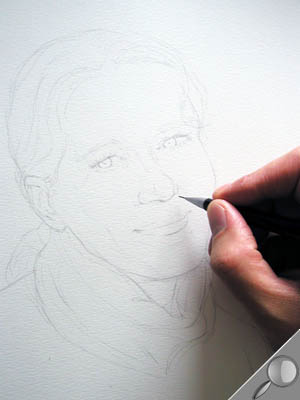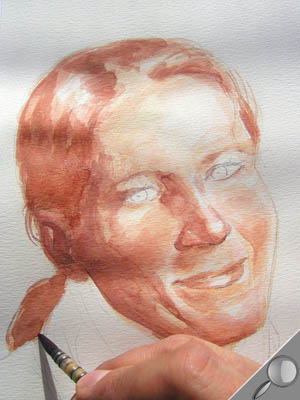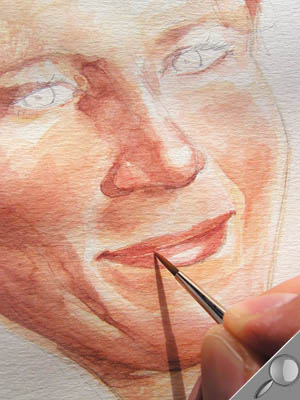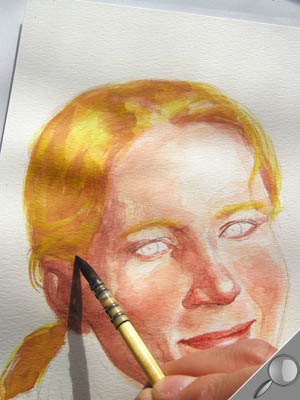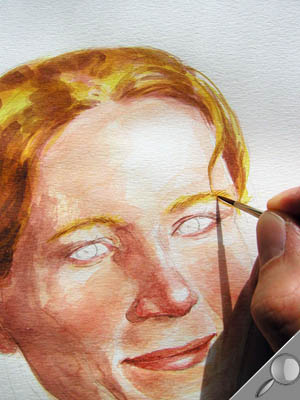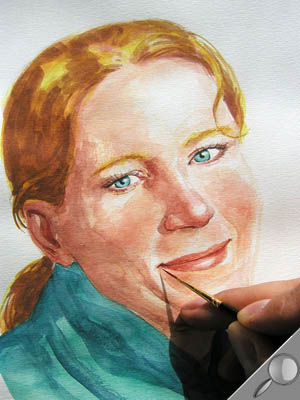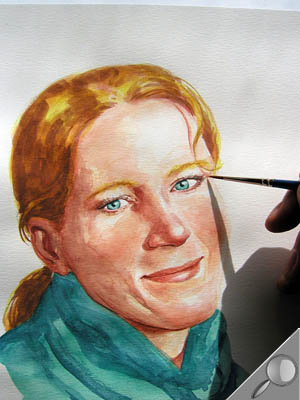
Level: intermediate / Time of execution: 2 hours
Artist: Mathias Braun
Some simple formulas can help you put expression in a face with watercolors: working in a large format and making use of white spaces, for example. Your challenge: learn how to handle proportions, because you will tend (at least to begin with...) to enlarge some aspects (eyes or mouth) and reduce others (ears, neck, forehead, hair). Finally, to best convey the model's personality, remember to represent him or her down to the shoulders: this allows you to show where the head fits, and to give it an attitude, even a familiar expression.
Material
- Paper: Canson® Montval® 200 g/(m)2 - fine grained.
- Colors: Rembrandt® primary yellow, red, purple, ultramarine blue, emerald green and burnt sienna watercolors in pots.
- Pencils and paintbrushes: 1 very well sharpened, medium (HB) pencil or 1 fine mechanical pencil (0.5 mm), 1 wash brush, 1 medium round pointed (squirrel) paintbrush, 1 fine round pointed brush (sable) for finishing.
